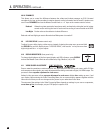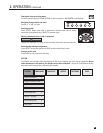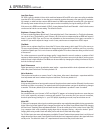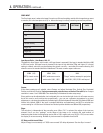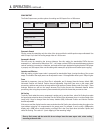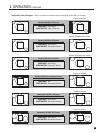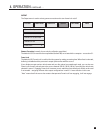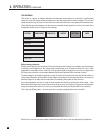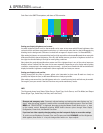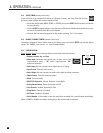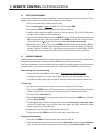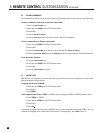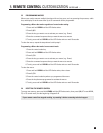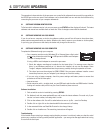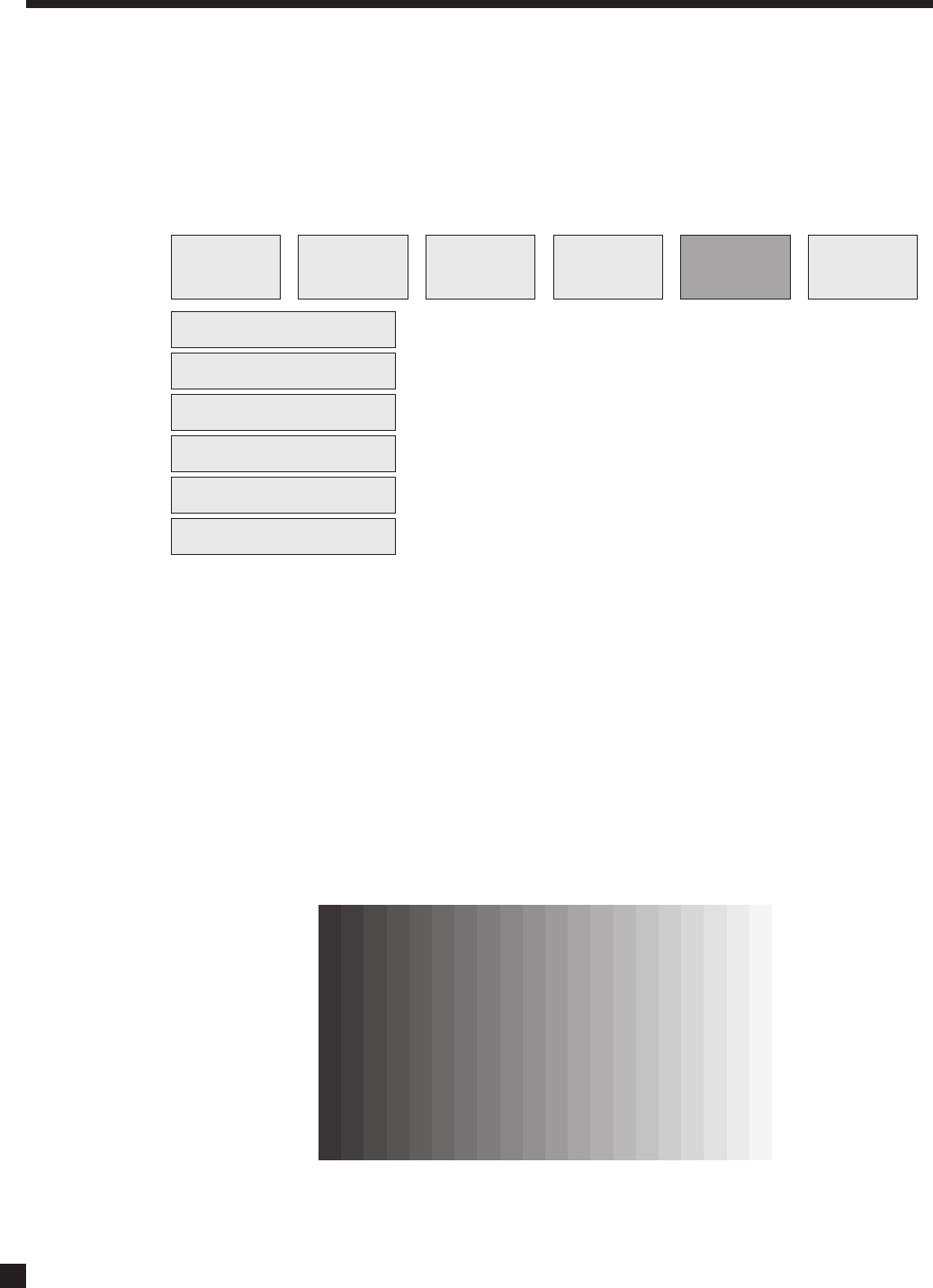
72
4. OPERATION continued …
TEST PATTERNS
This section is a primer on display calibration and although the procedure is no match for a professional
setup, the result will almost always be better than using the display with its factory settings. The only tool
needed to adjust color this way is a blue filter that comes with test discs or the glasses from www.thx.com.
These digitally generated patterns can be more accurate than those played from a disc since some discs
and players contain errors in design or user settings.
Before starting calibration
Set the room’s lighting to the level that will be used during normal viewing. If your display varies light output
according to the brightness of the image and/or ambient light, turn off these functions for now. If color
temperature is selectable, select “medium” or the one that is neither too blue nor too red. If your display has
DVI input, ensure that the correct output between Studio and Extended RGB is selected in menu 1.
The best setting for the display’s sharpness control is usually at its lowest even when the default position is
in the center. Sharpness is the addition of false edges around objects in the image and there is no reason to
add false edges on all video sources unless there is something wrong with all video sources.
Any of these patterns can also be used to check whether the display is showing the whole image – if the
bars at the left and right of the screen are narrower than the rest, your display is cropping and rescaling the
image. As mentioned in section 3.1, see if you can disable this (select dot-by-dot mode in your display).
This is the gray 20-bar pattern – the red, green, blue, and gray/red/green/blue ones are similar:
Black level is one step below the pattern’s darkest bar and full level is one step beyond the brightest bar.
SCALE OUTPICTURE CROP INPUT PATTERNS INFO
OUTPUT
Gray Bars
Red Bars
Green Bars
Blue Bars
Gray/Red/Green/Blue Bars
Color Bars



